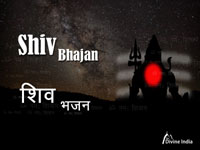

Situated in the divine beauty of the Himalayas, Muktinath Temple stands as a spiritual one in the Char Dham Yatra of Nepal. Situated on the ancient Thorong La mountain pass, this sacred site is revered by Hindu and Buddhist pilgrims alike. Char Dham of Nepal is a group of four Hindu religious sites in Nepal. They are Pashupat Kshetra, Mukti Kshetra, Ruru Kshetra and Barha Kshetra. As an important stopover in the divine journey, Muktinath, meaning "place of liberation", offers a serene environment and breathtaking mountain views. Pilgrims believe that a visit to this holy temple provides liberation from the cycle of birth and death. The Muktinath Temple, with its sacred ponds and eternal flames, symbolizes the spiritual essence of Nepal's Char Dham pilgrimage.
Pashupatinath Temple, a revered sanctuary in Nepal's Char Dham Yatra, stands as a testament to devotion and ancient spirituality. Situated on the banks of the sacred Bagmati River, this UNESCO World Heritage Site holds profound significance for Hindu pilgrims. Dedicated to Lord Shiva, the temple's pagoda-style architecture and intricate carvings evoke a divine aura. Pilgrims believe that circumambulating the temple brings blessings and purifies the soul. As an integral stop in the Char Dham Yatra, Pashupatinath encapsulates the rich tapestry of Nepal's religious heritage, drawing devotees seeking spiritual solace and connection with the divine.
Nestled in the celestial beauty of the Himalayas, Muktinath Temple stands as a spiritual oasis in Nepal's Char Dham Yatra. Situated at the pristine Thorong La mountain pass, this sacred site is revered by Hindu and Buddhist pilgrims alike. The Char Dham of Nepal is a set of four Hindu religious sites in Nepal. They are Pashupat Kshetra, Mukti Kshetra, Ruru Kshetra and Baraha Kshetra. As a pivotal stop in the divine journey, Muktinath, meaning "Place of Liberation," offers a serene ambiance and breathtaking mountain vistas. Pilgrims believe that a visit to this sacred temple brings liberation from the cycle of birth and death. Muktinath Temple, with its sacred ponds and eternal flames, epitomizes the spiritual essence of Nepal's Char Dham Yatra.
Embark on a journey of divine serenity and cultural richness as you explore Ruru Kshetra in Nepal. Nestled at the confluence of the Kaligandaki River and Ridi Khola, Ruru Kshetra is a sacred destination at the tri-junction of Gulmi, Palpa, and Syangja districts. This religious and cultural haven forms an integral part of Nepal's Char Dhams, inviting pilgrims and enthusiasts to experience the essence of spirituality.
Nestled at the confluence of the Koka and Koshi rivers in Barahakshetra, Sunsari, within the Koshi Province of Nepal, Barahachhetra stands as a revered pilgrimage site deeply intertwined with Hindu and Kirat traditions. This sacred locale, alternatively known as Barahakshetra or Varahakshetra, boasts a rich history dating back to antiquity, as chronicled in revered Puranas like the Brahma Purana, Varaha Purana, and Skanda Purana. Its prominence is further accentuated by its mention and glorification in the epic Mahabharata.
The Char Dham Yatra in Nepal is not just a physical journey but a soul-stirring experience through diverse landscapes—towering mountains, meandering rivers, and dense forests. Pilgrims, donned in traditional attire, traverse these sacred paths seeking blessings, absolution, and communion with the divine.
As the pilgrims progress through each sacred site, the air resonates with the sounds of bells, hymns, and the rustling of prayer flags. The Yatra is not merely a ritual; it is a profound spiritual encounter that leaves an indelible mark on the hearts of those who embark on this transformative journey.
In the embrace of the Char Dham Yatra, Nepal unfolds as a tapestry of faith, culture, and natural beauty—a canvas where the spiritual and the earthly converge, offering a pilgrimage that transcends the physical realm. For those who seek a communion with the divine, the Char Dham Yatra in Nepal is a sacred expedition, an odyssey that etches spiritual footprints in the soul.